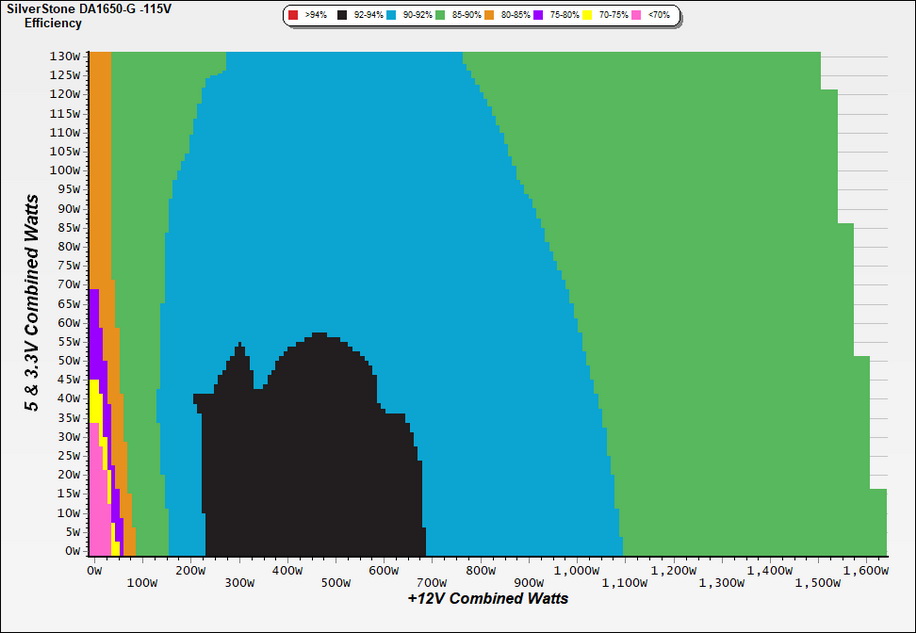Why you can trust Tom's Hardware
Protection Features
Check out our PSUs 101 article to learn more about PSU protection features.
| Protection Features | Row 0 - Cell 1 |
OCP (Cold @ 27°C) | 12V: 178.2A (129.6%), 11.938V |
OCP (Hot @ 43°C) | 12V: 177.6A (129.16%), 11.925V |
OPP (Cold @ 31°C) | 2140.63W (129.73%) |
OPP (Hot @ 43°C) | 2131.203W (129.16%) |
OTP | ✓ (166°C @ 12V Heat Sink) |
SCP | 12V: ✓ |
PWR_OK | Inaccurate |
NLO | ✓ |
SIP | Surge: MOV |
OCP is correctly set at 12V, and the same goes for OPP. On the other hand, OCP is set extremely high on the minor rails, and there is not a point in this, given that they don't get much stress from today's systems. Finally, it is quite disappointing to see a non-accurate power ok signal in such a high-end power supply.
DC Power Sequencing
According to Intel’s most recent Power Supply Design Guide (revision 1.4), the +12V and 5V outputs must be equal to or greater than the 3.3V rail at all times. Unfortunately, Intel doesn't mention why it is so important to always keep the 3.3V rail's voltage lower than the levels of the other two outputs.
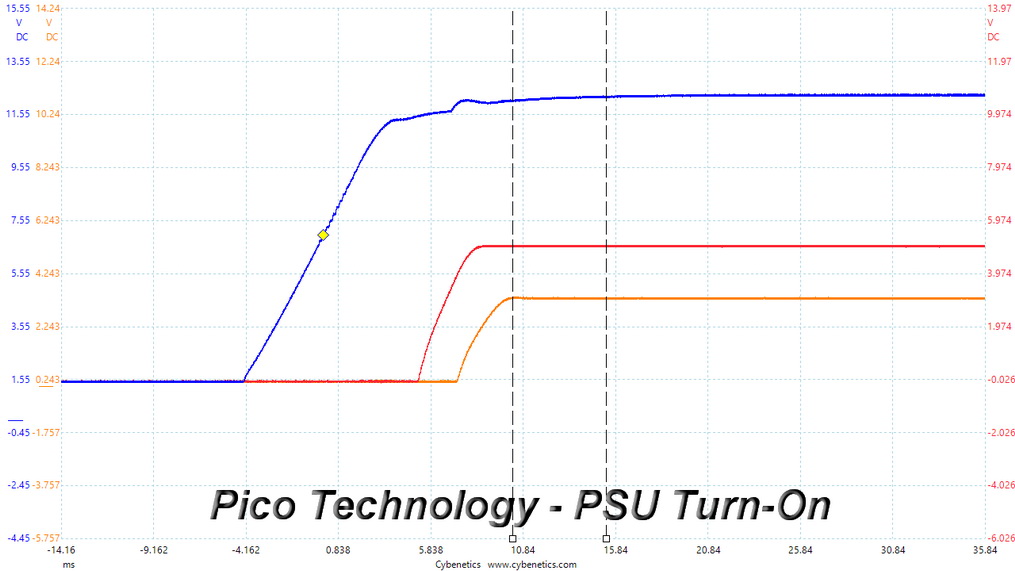
DC Power Sequencing Scope Shots
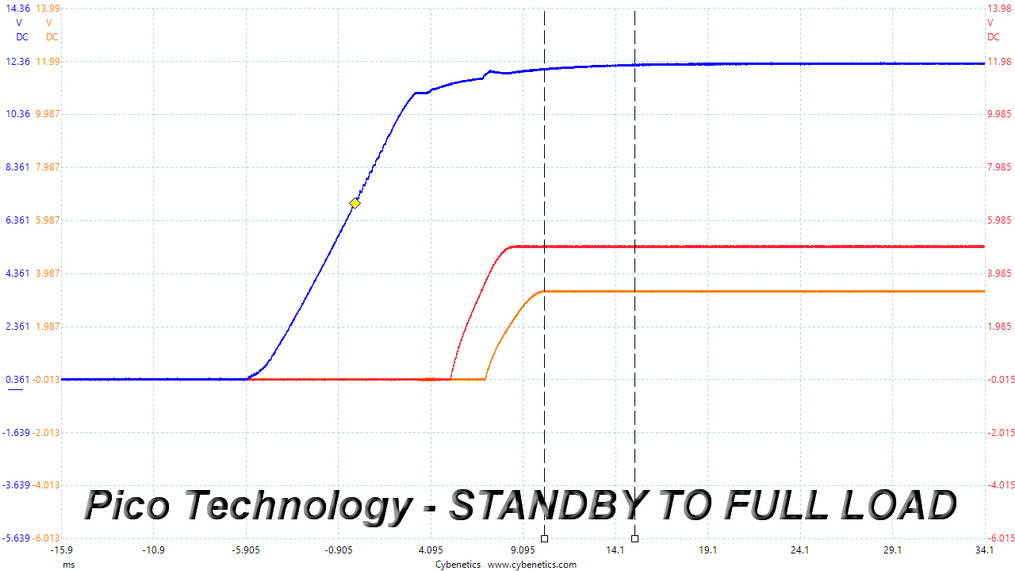
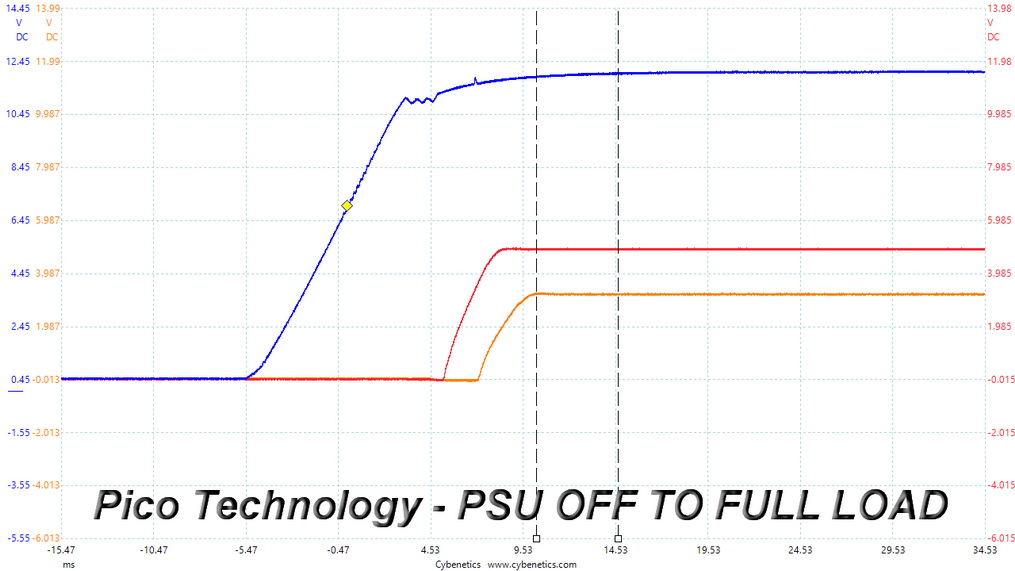
No problems here since the 3.3V rail is always at a lower voltage level than the other two rails.
Cross Load Tests
To generate the following charts, we set our loaders to auto mode through custom-made software before trying more than 25,000 possible load combinations with the +12V, 5V, and 3.3V rails. The deviations in each of the charts below are calculated by taking the nominal values of the rails (12V, 5V, and 3.3V) as point zero. The ambient temperature during testing was between 30 to 32 degrees Celsius (86 to 89.6 degrees Fahrenheit).
Load Regulation Charts

Load Regulation Charts
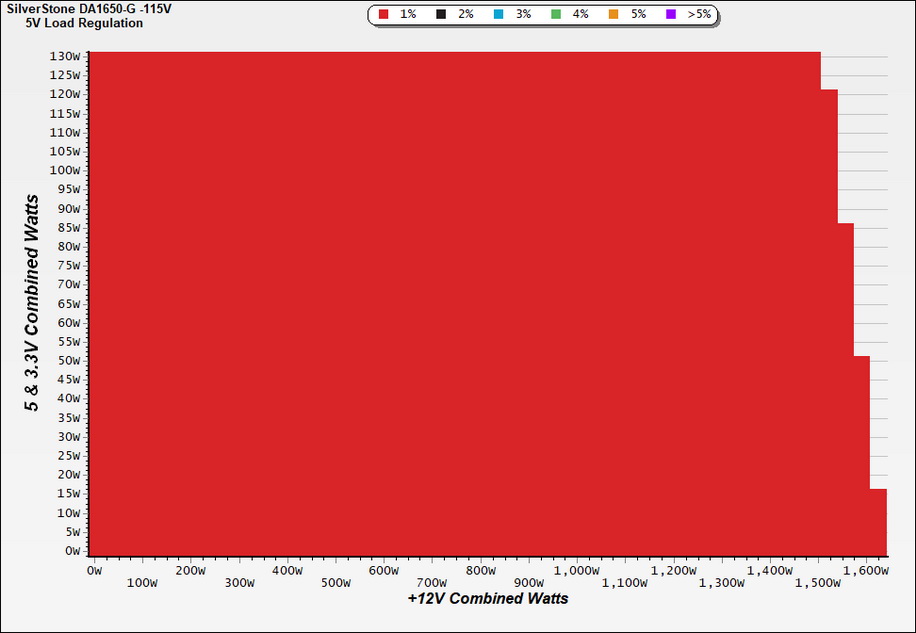
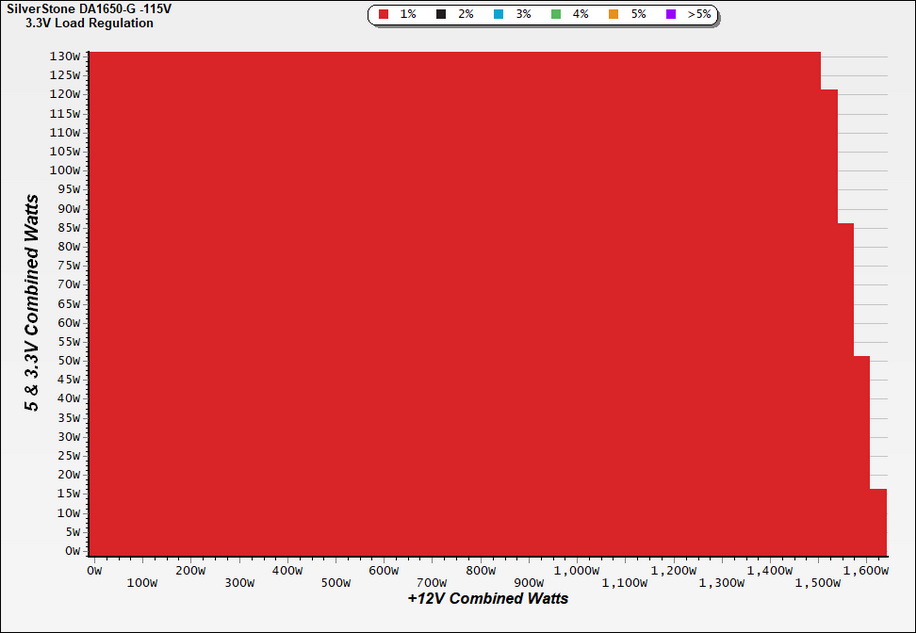
Efficiency Chart
Ripple Charts
The lower the power supply's ripple, the more stable the system will be and less stress will also be applied to its components.
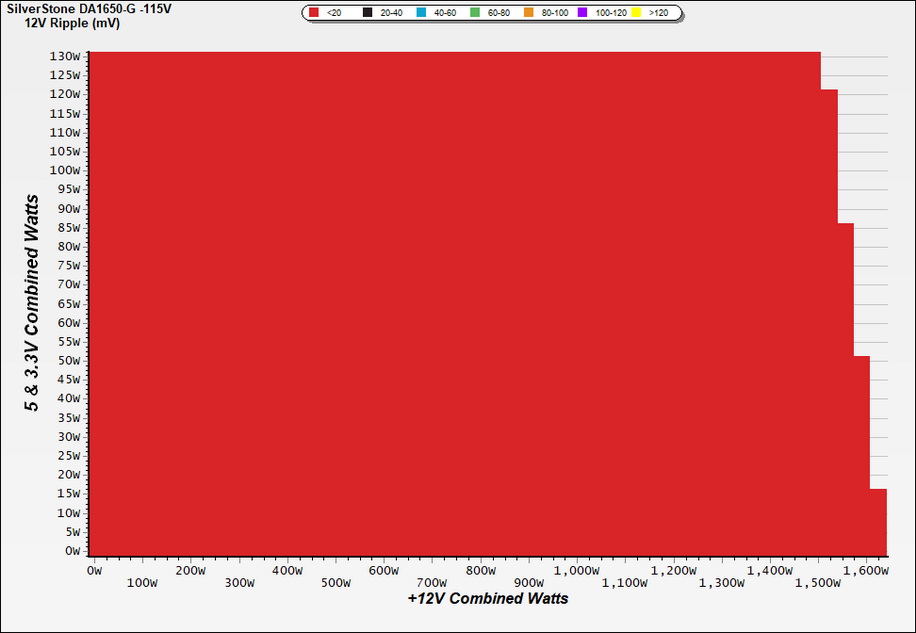
Ripple Suppression Charts
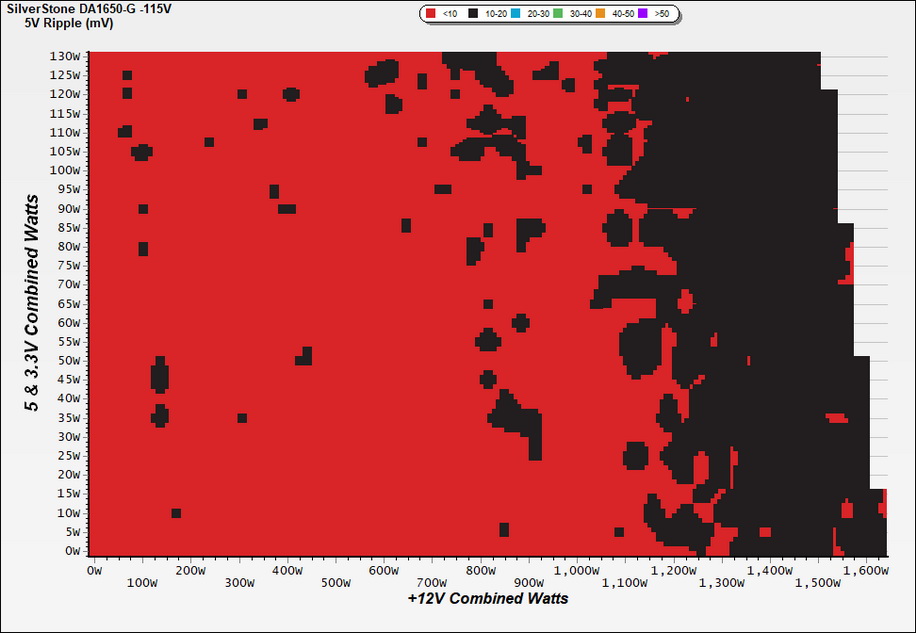
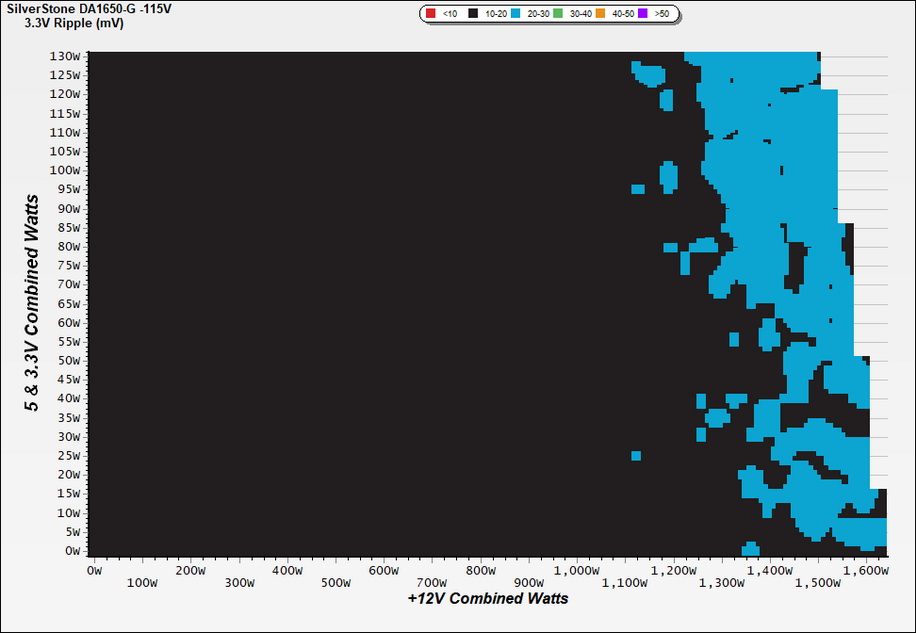
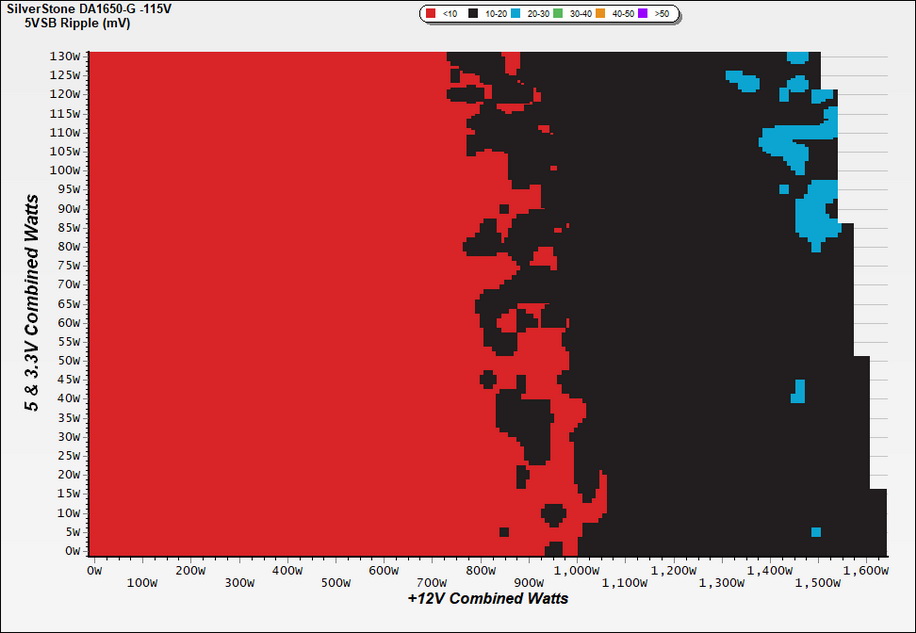
Infrared Images
We apply a half-load for 10 minutes with the PSU's top cover and cooling fan removed before taking photos with a modified FLIR E4 camera able to deliver an IR resolution of 320x240 (76,800 pixels).
Get Tom's Hardware's best news and in-depth reviews, straight to your inbox.

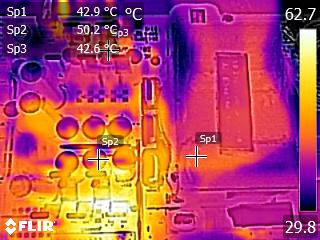

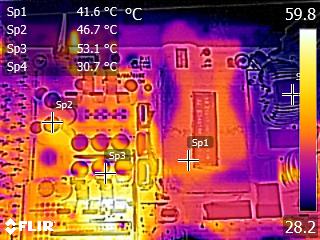

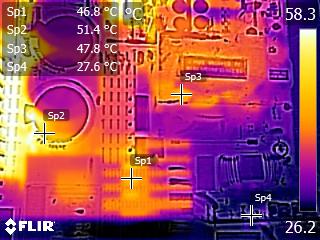
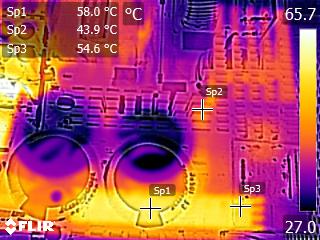
Temperatures are kept low at the internals during this test session. The hottest part is located on the DC-DC regulators. Thanks to the clean design and the large enough PCB, which allows for enough clearance between parts, the airflow is unobstructed, so once the fan is activated, heat is effectively removed.
MORE: Best Power Supplies
MORE: How We Test Power Supplies
MORE: All Power Supply Content
Current page: Protection Features, DC Power Sequencing, Cross-Load Tests and Infrared Images
Prev Page Load Regulation, Hold-Up Time, Inrush & Leakage Current, Efficiency and Noise Next Page Transient Response Tests, Timing Tests, Ripple Measurements and EMC Pre-Compliance Testing
Aris Mpitziopoulos is a contributing editor at Tom's Hardware, covering PSUs.
-
Awev Just wondering, what is the suggested retail price for this? And by offering only a three year warranty how much does that save a person compared to the competition, if you only plan to use it for say 2 1/2 years when the next generation of AMD (AM5 socket) and Intel CPUs are released, along with new GPUs - all requiring more power? How long would you have to own one or the other before it really pays for itself in warranty vs actual expected life?Reply
Please let me know if I missed the price in the article somewhere. -
Endymio And of course 90% of the buyers will be those with systems drawing half or less of that 1650 watts, but who have convinced themselves they "need" the extra headroom.Reply
